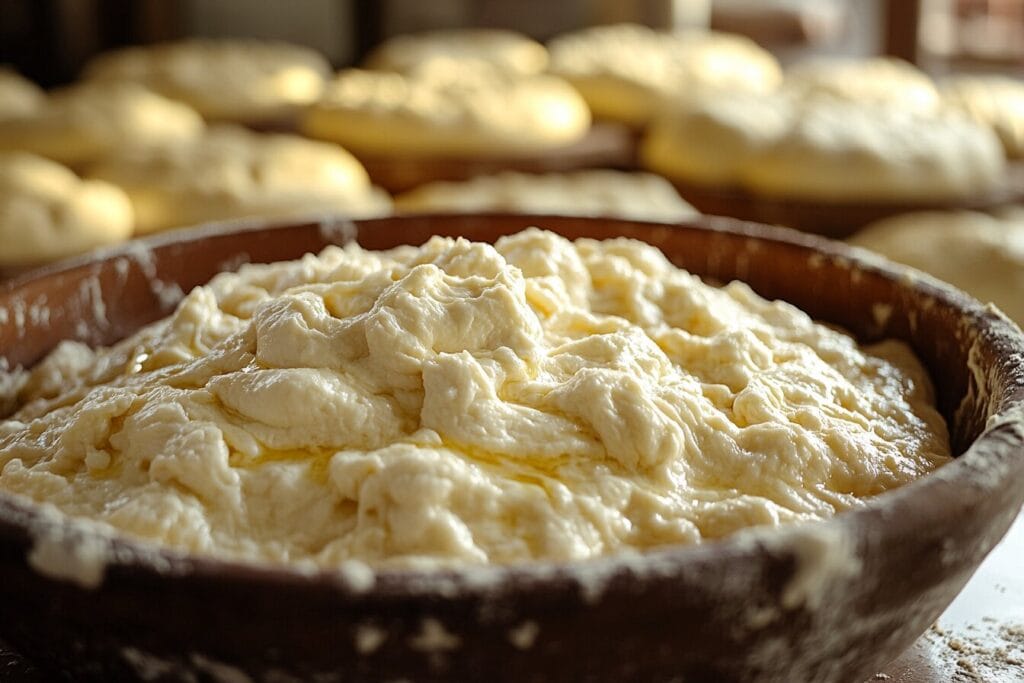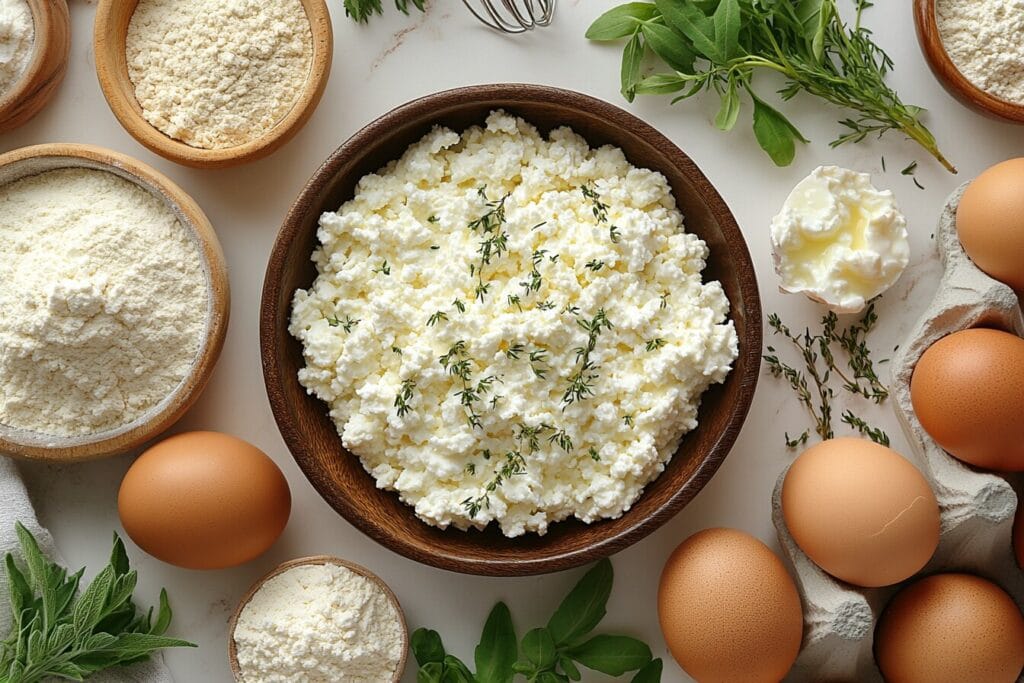Introduction
Flatbreads made with cottage cheese are beloved for their soft texture and unique flavor, but many wonder, “Why is my cottage cheese flatbread soggy?” Whether served as a side dish, a snack, or the base for creative toppings, they can elevate any meal. However, a soggy flatbread is not only disappointing but can also ruin the experience entirely.
This article explores why your cottage cheese flatbread may be soggy and offers solutions to fix and prevent the issue. From examining common mistakes in preparation and cooking techniques to sharing actionable tips for perfect flatbread every time, we’ve got you covered. By the end of this guide, you’ll know exactly how to troubleshoot and avoid sogginess in your cottage cheese flatbread.

Common Causes of Soggy Cottage Cheese Flatbread
A soggy cottage cheese flatbread can result from a variety of factors during the preparation, cooking, or serving process. Let’s explore the most common reasons to help you identify where things might be going wrong.
Mistakes in Dough Preparation
One of the most critical steps in making flatbread is preparing the dough correctly. Any mistakes here can lead to a soggy final product.
Overly Wet Dough
If the dough contains too much moisture, it becomes difficult to cook it thoroughly. Cottage cheese, being naturally moist, contributes additional liquid to the dough. Failing to account for this can result in a dough that is overly sticky and hard to handle.
Incorrect Ratios of Ingredients
The balance of wet and dry ingredients is key. If the cottage cheese or other liquid ingredients outweigh the dry ones (like flour), the dough will lack the structure needed to maintain its shape during cooking, leading to a soggy texture.
Insufficient Kneading
Kneading activates gluten in the flour, providing elasticity and structure. If the dough isn’t kneaded enough, it won’t hold together properly during cooking, increasing the chances of uneven moisture distribution and sogginess.
Incorrect Cottage Cheese Usage
Cottage cheese is a star ingredient in this flatbread, but improper handling can cause problems.
Excessively Moist Cottage Cheese
Cottage cheese varies in texture and moisture levels. If you use a particularly wet variety without draining it first, it may release excess liquid into the dough or onto the surface during cooking.
Large Cheese Curds
While larger curds may seem appealing, they can create pockets of uneven moisture in the dough. These pockets can make some areas of the flatbread soggier than others.
Excessive Moisture from Other Ingredients
Flatbreads often include additional ingredients, such as herbs, vegetables, or toppings. These can also contribute to a soggy texture if not handled correctly.
Uncooked Vegetables or Toppings
Vegetables like tomatoes, zucchini, or onions release water when cooked. If added raw to the dough or as toppings, they can make the flatbread soggy.
Adding Too Many Wet Ingredients
A combination of cottage cheese, raw vegetables, and other wet ingredients can overwhelm the dough, leading to uneven cooking and a soggy consistency.
Improper Cooking Techniques
Cooking is the final step, but it’s also where many issues can arise.
Inadequate Heat Levels
Cooking flatbread at too low a temperature doesn’t allow moisture to evaporate properly, resulting in a soggy texture. High heat is necessary to achieve the crisp exterior that balances the soft interior of the bread.
Underbaking or Undercooking
If the flatbread isn’t cooked for long enough or at the right temperature, the dough will remain partially raw inside. This undercooking traps moisture and creates a soggy result.
Using the Wrong Pan or Surface
Non-stick pans, while convenient, can sometimes prevent proper browning. A cast-iron skillet or a pizza stone retains heat more effectively, ensuring even cooking and reducing sogginess.
How to Fix a Soggy Cottage Cheese Flatbread
If you’ve encountered sogginess in your cottage cheese flatbread, don’t worry. There are several practical ways to address the issue and salvage your recipe. By adjusting your methods and being mindful of certain details, you can improve the texture and flavor of your flatbread.
Adjusting the Dough Consistency
One of the first areas to troubleshoot is the consistency of the dough. A properly balanced dough is essential for a successful flatbread.
Add More Dry Ingredients
If your dough feels too wet or sticky, gradually incorporate more flour until it reaches a workable consistency. Whole wheat flour, all-purpose flour, or even almond flour (if gluten-free) can help absorb excess moisture.
Use Less Liquid in the Recipe
Be cautious with other liquid ingredients in your dough, such as water, milk, or eggs. When using cottage cheese, reduce these liquids slightly to offset the cheese’s natural moisture.
Incorporate Binding Agents
Adding an extra egg or a binding agent like psyllium husk or xanthan gum can improve the structure of the dough, preventing sogginess. These ingredients help hold moisture in place without making the flatbread overly wet.

Managing the Moisture Content in Cottage Cheese
Since cottage cheese is the key ingredient, managing its moisture content can make a big difference.
Drain Excess Liquid
Place the cottage cheese in a fine mesh strainer or cheesecloth and press gently to remove excess moisture. This step ensures you’re not adding unnecessary liquid to the dough.
Choose the Right Type of Cottage Cheese
Opt for a drier, small-curd variety of cottage cheese rather than the creamier or large-curd options. Drier cheese is less likely to release water during cooking.
Blend or Mash the Cheese
For a smoother texture and better integration into the dough, blend the cottage cheese briefly or mash it with a fork. This step also helps distribute the moisture evenly.
Enhancing Cooking Methods
Cooking techniques play a significant role in ensuring your flatbread turns out perfectly cooked and not soggy.
Preheat Your Cooking Surface
Whether you’re using a skillet, griddle, or pizza stone, preheating is crucial. A hot surface ensures that the flatbread starts cooking immediately, sealing the exterior and preventing excess moisture retention.
Cook at the Right Temperature
Maintain medium-high heat when cooking on the stovetop or in the oven. Too low, and the flatbread will cook unevenly, staying soggy in the middle. Too high, and the outside may burn before the inside is done.
Use Minimal Oil
While oil helps with browning, too much can make the flatbread greasy and contribute to sogginess. Use a light coating of oil or a cooking spray for best results.
Flip or Rotate as Needed
For even cooking, flip the flatbread halfway through or rotate it if baking. This ensures the heat is distributed evenly and reduces the chances of undercooking any part of the bread.
Reviving an Already Soggy Flatbread
If your flatbread has already turned out soggy, there are still ways to fix it.
Reheat in a Dry Pan or Oven
Place the flatbread on a preheated skillet or in a 375°F (190°C) oven for a few minutes. The direct heat will help evaporate excess moisture, restoring some crispness to the bread.
Cut Into Smaller Pieces and Toast
If reheating doesn’t work, cut the flatbread into smaller pieces and toast them in an oven or air fryer. These smaller pieces can make excellent flatbread chips or crackers.
Tips for Making Perfect Cottage Cheese Flatbread Every Time
Creating the ideal cottage cheese flatbread requires attention to detail and a few tried-and-true techniques. By following these expert tips, you can ensure consistently delicious and non-soggy results every time.
Choosing the Right Ingredients
The quality and type of ingredients you select will significantly affect the texture and flavor of your flatbread.
Opt for High-Quality Cottage Cheese
Choose cottage cheese that is fresh and free of additives like stabilizers or excess cream. These can alter the moisture content and make your dough harder to control.
Use Proper Flour Varieties
The type of flour you use can impact the flatbread’s texture. All-purpose flour offers a balance of elasticity and softness, while whole wheat flour provides a denser texture. For gluten-free options, try almond flour, chickpea flour, or a 1:1 gluten-free baking mix.
Incorporate Complementary Ingredients
Adding dried herbs like oregano or thyme, spices like garlic powder, or seeds such as chia or sesame can enhance the flavor while maintaining the right moisture balance.
Prepping and Handling the Dough
Proper dough preparation is the foundation for flatbread success.
Measure Ingredients Precisely
To avoid an overly wet dough, use precise measurements. If you’re experimenting, start with smaller amounts of cottage cheese and other wet ingredients, then gradually add more if needed.
Allow the Dough to Rest
Resting the dough for 10–15 minutes before cooking can improve its structure. During this time, the flour absorbs the liquid, making the dough easier to handle and less prone to sticking.
Roll or Flatten Evenly
When shaping the dough, aim for an even thickness. Uneven dough can cause certain areas to remain undercooked and soggy while others overcook.
Best Practices for Cooking Flatbread
The cooking method you choose can make or break your flatbread.
Choose the Right Cooking Equipment
For stovetop cooking, a cast-iron skillet or heavy-bottomed pan works best. In the oven, a pizza stone or baking steel ensures even heat distribution.
Preheat Thoroughly
Always preheat your cooking surface for at least 5–10 minutes. A hot surface prevents the dough from sticking and helps achieve a crispy exterior.
Monitor Cooking Time Closely
Cooking time can vary based on the thickness of your flatbread and the heat level. Typically, it should take 2–3 minutes per side on a stovetop or 6–8 minutes in the oven. Adjust as needed to avoid over- or undercooking.
Avoid Overloading with Toppings
If you plan to add toppings, do so sparingly. Too many wet toppings can overwhelm the bread and reintroduce sogginess. Precook vegetables like tomatoes or mushrooms to reduce their moisture before adding them.
Experiment with Techniques for Better Results
If you’re new to making cottage cheese flatbread, don’t be afraid to experiment with your methods to find what works best for you.
Try Different Cooking Methods
If you’ve always cooked your flatbread on the stovetop, consider trying the oven or even a grill for a smoky flavor. Each method offers a unique texture and flavor.
Use Parchment Paper for Baking
When baking flatbread in the oven, place it on parchment paper to prevent sticking and make cleanup easier.
Layer Flavors Strategically
If incorporating herbs or spices directly into the dough, ensure they’re evenly mixed to avoid pockets of intense flavor or moisture.
Consistency is Key
By keeping these tips in mind and maintaining consistency in your process, you’ll be well on your way to mastering cottage cheese flatbread.

Frequently Asked Questions
Flatbreads made with cottage cheese can be tricky to perfect, especially for beginners. Below, we address some of the most common questions to help you troubleshoot and refine your technique.
Can I Use Low-Fat Cottage Cheese for Flatbread?
Yes, low-fat cottage cheese can be used, but it’s important to consider its higher moisture content compared to regular cottage cheese. Low-fat varieties often contain more water, which can lead to soggy dough. To counter this, thoroughly drain the cheese before adding it to the dough. You may also need to add extra flour to balance the moisture.
How Do I Know When the Flatbread Is Fully Cooked?
A properly cooked flatbread should have a golden-brown exterior and a soft but fully set interior. Signs that your flatbread is ready include:
- It feels firm when gently pressed.
- No doughy or sticky spots remain on the surface.
- When cut, the inside is light and evenly cooked without any raw areas.
Using a thermometer is another option: a fully cooked flatbread should reach an internal temperature of about 190°F (88°C).
What Type of Flour Works Best for Cottage Cheese Flatbread?
The choice of flour depends on your desired texture and dietary needs:
- All-Purpose Flour: Provides a light and fluffy flatbread.
- Whole Wheat Flour: Adds a nutty flavor and denser texture, perfect for hearty meals.
- Gluten-Free Flour Blends: Ideal for those with gluten intolerance, but ensure the blend contains xanthan gum or another binder to maintain structure.
- Chickpea or Almond Flour: These flours are excellent for gluten-free flatbreads with a unique flavor. However, they may require additional eggs or binding agents for stability.
Can I Make the Dough Ahead of Time?
Yes, the dough can be prepared in advance. Here are some tips for storing and using it:
- Refrigerate: Wrap the dough tightly in plastic wrap and store it in the fridge for up to 24 hours. Allow it to come to room temperature before rolling and cooking.
- Freeze: Flatten the dough into individual portions and freeze them in an airtight container or freezer bag. Thaw completely in the refrigerator before cooking.
Preparing dough ahead of time can improve the flavor as the resting period allows ingredients to meld together.
What Are Common Signs That My Flatbread Dough Is Too Wet?
A wet dough is a common cause of soggy flatbread. Look out for these signs:
- Stickiness: The dough clings excessively to your hands or rolling pin, making it difficult to shape.
- Inability to Hold Shape: The dough spreads out or flattens on its own instead of holding its form.
- Visible Wet Patches: The surface of the dough looks shiny or damp.
To fix wet dough, knead in small amounts of flour until the consistency becomes soft and pliable without being sticky.
Can I Substitute Cottage Cheese with Other Ingredients?
While cottage cheese is the key ingredient, you can substitute it with similar options if needed:
- Ricotta Cheese: Offers a similar creamy texture but with less tanginess. Drain it thoroughly before use.
- Greek Yogurt: Provides a tangy flavor but requires additional flour to offset its moisture.
- Mashed Silken Tofu: A dairy-free alternative that works well in vegan flatbread recipes.
These substitutes may slightly alter the flavor and texture but can still yield delicious flatbread.
Conclusion
Cottage cheese flatbread is a delightful addition to any meal, but achieving the perfect texture requires attention to detail. If you’ve ever wondered, “Why is my cottage cheese flatbread soggy?” you’re not alone. A soggy flatbread, while frustrating, is often the result of avoidable mistakes such as overly wet dough, excessive moisture from ingredients, or improper cooking techniques. By understanding why your cottage cheese flatbread turns soggy and applying targeted fixes, you can transform your flatbread into a perfectly balanced creation every time.
Whether it’s adjusting the dough consistency, managing the moisture in cottage cheese, or refining your cooking methods, the solutions are simple yet effective. By following expert tips, such as choosing the right ingredients and preheating your cooking surface, you’ll gain the confidence to create flatbreads that are soft, flavorful, and never soggy.
With practice and experimentation, you’ll master the art of making cottage cheese flatbread, and it’s sure to become a staple in your kitchen. From customizing ingredients to ensuring even cooking, the possibilities are endless. Happy baking!

